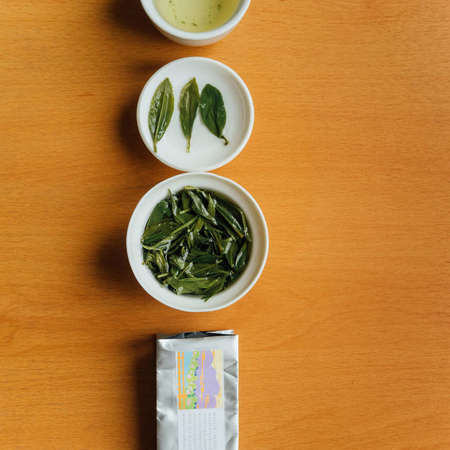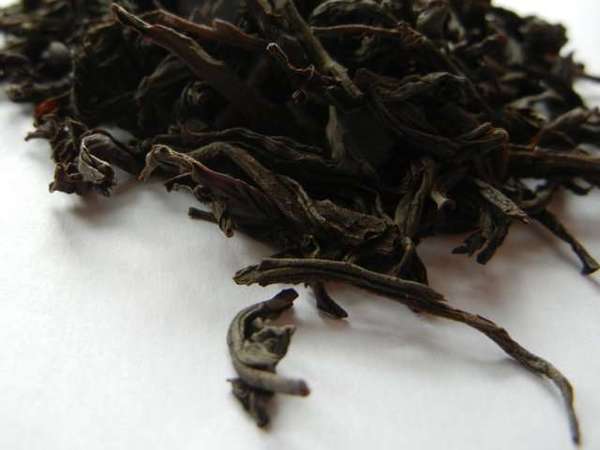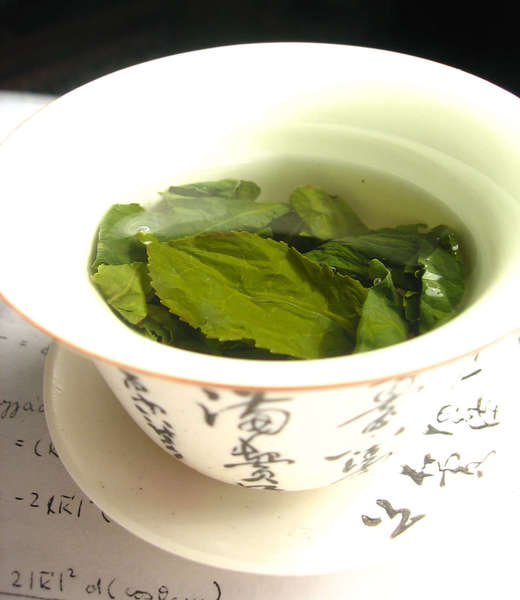Whole Leaf Tea (Full Leaf Tea)
Last Updated: Jul. 26, 2017
 After steeping whole-leaf tea, you can see the individual leaves. Photo © Etienne FAT, CC BY 2.0
After steeping whole-leaf tea, you can see the individual leaves. Photo © Etienne FAT, CC BY 2.0There are numerous advantages to buying whole leaf tea; the main downside is price.
Whole leaf tea is not the same as loose-leaf tea or loose tea. Although tea bags more commonly contain broken leaf tea, fannings, or dust, some high-quality tea bags, especially pyramid sachets, can contain whole leaf tea. And loose tea can also be broken-leaf.
Unfortunately, the terms whole leaf tea and full leaf tea are not legally protected or universally defined, and it is common for companies to sell broken leaf tea in pyramid sachets marketed under the terms "whole leaf tea" or "full leaf tea". Tea labelled in this mater usually consists of larger broken pieces than you would find in a typical tea bag, but it does not necessarily consist of fully intact leaves.
Variations in leaf size based on cultivar and leaf type
The size of tea leaves varies widely; whole leaf is not the same as large leaf: whole leaf tea from small leaf cultivars, and tips or leaf buds, can consist of considerably smaller pieces than broken leaf tea made from mature leaves of large leaf cultivars like the Assamica cultivar used in Assam black tea.Picture on the right is some broken-leaf black tea, Ceylon OPA, which has very large leaves. Oolongs and some other teas, like gunpowder tea, often have their leaves rolled into small pellets. In these cases, it can be hard to assess whether the leaf is fully intact without actually brewing the tea and letting the leaves unfurl.
Brewing whole leaf tea
Whole leaf tea is generally easier to brew than its broken leaf counterpart, but it requires considerably longer steeping times. The intact leaves have much less surface area, making it infuse more slowly and giving greater control over the outcome of the brewed cup. This facilitates gong fu brewing, which uses a much larger amount of leaf and briefer steepings.Because it infuses more slowly, and does not contain fine particles, whole leaf tea works very well with mug brewing. Whole leaf tea also works better with tea infusers that have a coarser mesh through which finer particles could easily slip. Whole leaf tea even has advantages for using infusers with finer meshes, as there is less particulate matter that can clog the mesh.
Effects on flavor
The intact nature of whole leaf tea allows for a degree of subtlety and complexity that is often absent from finely-broken teas. The whole, intact leaves often hold their flavor much better under storage, due in large part to their decreased surface area, and the fact that their surface consists mostly of the leaf's natural surface. Aged teas, including Pu-erh and aged oolongs, nearly always consist of intact leaves, and broken leaf teas are rarely aged.However, whole leaf tea is not universally superior. People seeking the strongest teas, such as strong Irish Breakfast teas, or seeking to drink tea with milk or cream, may actually prefer broken leaf or mechanically processed CTC teas, as these infuse quickly to produce a very robust cup.
The top rated teas on RateTea have tended to contain a mix of whole leaf and broken leaf teas, although very finely broken and mechanically processed teas tend not to rank as highly.
Value and price: Is it really worth buying whole leaf?
In terms of value, whole leaf tea is often a toss-up. The answer depends on your personal tastes and preferences. Although high-grades of tea offer superior flavor, they tend to sell for a considerably higher price. Especially if you manage to get your hands on a recently harvested batch, and you consume it while it is still fresh, broken leaf teas and lower grades of tea can sometimes offer superior quality when comparing teas in a similar price range.Whole leaf tea is best-suited for people who steep their tea multiple times and want to take the time to savor the nuances of each cup. For people who want to brew their tea quickly, and who may only steep it once, broken-leaf can offer better value.



